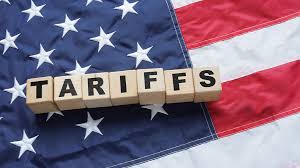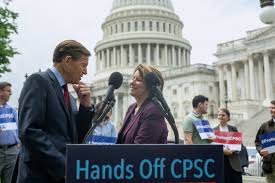What Are News Tariffs? A Complete Guide
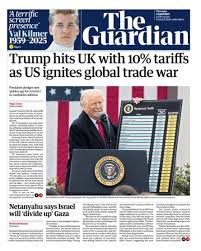
In recent years, news tariffs have become one of the most talked-about economic topics across global media. Every time a major government imposes or adjusts import taxes, the world reacts — markets fluctuate, businesses reassess supply chains, and consumers brace for price changes. But what exactly are news tariffs, and why do they dominate the headlines?
At their core, tariffs are taxes or duties imposed by a government on imported goods. They are among the oldest tools of economic policy, designed to regulate trade, protect domestic industries, and raise government revenue. When these tariffs make the news — due to policy shifts, trade wars, or large-scale economic implications — they become what we refer to as news tariffs.
To put it simply:
A news tariff is any tariff policy or announcement significant enough to make global headlines because it impacts trade, prices, or politics.
Why Tariffs Dominate the News
Tariffs rarely operate quietly. When a large economy like the United States, China, or the European Union enacts a new tariff, it can ripple across the global market. For example, the U.S.–China trade conflict saw over $350 billion worth of goods affected by tariff increases, pushing global manufacturers to rethink where they source raw materials and components.
Headlines like:
- “U.S. Doubles Tariffs on Chinese Steel”
- “India Faces New Tariff Hike on Textile Exports”
- “EU Imposes Carbon Tariffs on Imported Goods”
all describe news tariffs — policy changes that directly affect trade dynamics, consumer prices, and diplomatic relations.
The Growing Relevance of News Tariffs
Tariffs are not just abstract numbers in government documents. They influence:
- Prices of goods at local stores
- Job markets, especially in export or import-heavy sectors
- Stock markets and investment flows
- Diplomatic relations between countries
In 2025, tariffs are being used more frequently as a geopolitical weapon — not just an economic tool. Governments impose them to pressure rival economies, protect national industries, or respond to perceived unfair trade practices.
For instance:
| Year | Country | Tariff Action | Impact |
|---|---|---|---|
| 2025 | United States | 25% tariff on Chinese electric vehicles | EV prices surged in North America |
| 2024 | European Union | Carbon border adjustment tariffs | Encouraged cleaner industrial imports |
| 2023 | India | Tariffs on U.S. agricultural goods | Increased domestic farm prices |
| 2022 | China | Retaliatory tariffs on semiconductors | Disrupted global chip supply chains |
This constant back-and-forth has made “tariff news” a regular part of global economic reporting.
A Simple Example of How Tariffs Work
Let’s imagine a U.S. company imports solar panels from China.
- The base cost per unit: $100
- The government imposes a 20% import tariff
- The importer must now pay $20 extra per panel in tariffs
- The new cost becomes $120 per panel
The importer either absorbs the extra cost, lowering their profit margin, or passes it on to the consumer, raising prices in local markets. This is why when news tariffs are announced, you’ll often see phrases like “tariffs could raise prices for consumers.”
Why Understanding News Tariffs Matters
Whether you’re a business owner, consumer, or investor, tariffs can influence your financial decisions. Here’s why:
- Consumers – Tariffs often lead to higher prices on imported goods such as electronics, cars, and food items.
- Businesses – Companies that rely on imported raw materials face cost increases, forcing them to adjust pricing or sourcing.
- Investors – Markets respond to tariff announcements; industries like manufacturing or shipping can fluctuate dramatically after tariff news.
- Governments – Tariffs can boost domestic revenue but may invite retaliation from other nations.
According to a 2024 World Bank report, every 1% increase in global average tariffs can lead to a 0.4% decline in world trade volume — a massive shift given the trillions of dollars traded annually.
Quote to Remember
“In the era of interconnected economies, a single tariff decision can alter the trajectory of industries, currencies, and livelihoods across continents.”
— Dr. Emily Han, Global Trade Economist, London School of Economics
Key Takeaways from This Section
- News tariffs are import taxes that make headlines due to their broad impact.
- They influence consumer prices, trade relations, and business operations.
- Understanding them helps individuals and companies anticipate economic changes.
- Their increasing use as a political and economic tool means they’ll continue dominating global news.
Why We See News About Tariffs Frequently
Tariffs used to be technical policy details buried in government reports. Today, they dominate prime-time news and social media feeds. The reason is simple: news tariffs affect nearly every part of modern life — from the cost of your smartphone to the stability of global markets.
Understanding why tariffs keep making the news helps readers see how economic, political, and social forces intertwine.
Globalization and Supply Chains: How the World Became Tariff-Sensitive
Over the last few decades, the world’s economies have become deeply interconnected. A single product, such as a laptop, may be designed in the U.S., assembled in China, contain chips from Taiwan, and use lithium from Chile.
This vast network means that any change in tariffs — even on one component — can cause ripple effects worldwide. When a major economy like the U.S. or China imposes new tariffs, thousands of products in dozens of countries feel the impact.
Fact: According to the World Trade Organization (WTO), over 75% of global goods rely on international supply chains that cross multiple tariff zones before reaching consumers.
That’s why news tariffs aren’t just about government policy; they’re about the real-world movement of goods. One new tax can change where products are made, how they’re priced, and even whether they remain profitable.
Geopolitics and Trade Policy: Tariffs as Modern Weapons
In the 21st century, tariffs are used as strategic weapons rather than simple tax tools. Countries now impose tariffs to gain leverage in political or security disputes — a trend known as “weaponized interdependence.”
Examples:
- The U.S.–China trade war (2018–2025) used tariffs to pressure China over intellectual property and trade imbalance issues.
- The European Union’s carbon border tariff penalizes high-pollution imports, linking trade to environmental policy.
- India’s 2025 tariff increase on Russian-linked oil imports was part of a broader geopolitical stance.
In each of these cases, tariff changes triggered global media coverage because they didn’t just change prices — they altered diplomatic relationships.
“Every tariff today carries a message. It’s no longer just about economics; it’s about power.”
— Martin O’Reilly, Trade Policy Analyst, Brookings Institution
Domestic Politics and Protectionism: The Local Angle Behind News Tariffs
Tariffs are also political tools used to appeal to domestic voters. Leaders often announce them to show they are “protecting local jobs” or “standing up for national industries.”
For instance:
- The U.S. steel tariffs were designed to revive local steel mills and win votes in industrial states.
- India’s agricultural tariffs often align with election cycles to gain farmer support.
While these measures may seem local, they often make international news because of their global trade implications. Protectionist policies might help one industry but hurt others that depend on imported materials.
Here’s a quick look at how domestic motives translate into global news:
| Country | Example of Protectionist Tariff | Domestic Goal | Global Outcome |
|---|---|---|---|
| United States | 25% steel tariff | Protect U.S. steelworkers | Retaliation from EU, Canada |
| India | 40% rice export tariff | Secure domestic food supply | Asian price surge |
| EU | 15% carbon border tax | Promote green manufacturing | Shifts in global carbon trade |
| Brazil | 20% textile import tariff | Support local mills | Higher regional textile prices |
Media Coverage and Public Curiosity: The Human Element
Another reason tariffs dominate news cycles is that they are easily relatable. When consumers hear “new tariffs on cars” or “higher import taxes on electronics,” they immediately think of their wallets.
Media outlets know this — which is why news tariffs receive extensive attention with dramatic headlines like:
“Trade Shock: Tariffs to Raise Prices on Everyday Goods”
“Tariff War Escalates Between Global Powers”
“How Tariffs Could Affect Your Next iPhone Purchase”
Moreover, digital media amplifies these stories through social networks, making them trending topics within hours. People no longer have to read economic reports — they see real-time news about tariffs on Twitter, LinkedIn, and financial apps.
Why Tariffs Will Keep Making News
As long as the world remains interconnected and politically divided, tariffs will continue to dominate global headlines. The next time a government announces a tariff, it’s not just a policy shift — it’s a story about power, economics, and daily life.
Key takeaways:
- Global supply chains make tariffs everyone’s business.
- Tariffs are now tools of politics and diplomacy.
- Protectionism at home creates headlines abroad.
- Media coverage fuels public awareness and market reactions.
In essence, news tariffs reflect the pulse of global economic power — and understanding them helps us make sense of why one announcement in Washington or Beijing can affect prices in Lahore, London, or Lagos overnight.
Understanding Tariffs – The Basics
Before diving deeper into why news tariffs dominate headlines, it’s important to understand what tariffs really are, how they work, and who they impact.
While the word “tariff” might sound like a complex economic concept, it’s actually quite straightforward:
A tariff is simply a tax imposed by a government on imported goods or services.
But behind that simple definition lies a network of financial, political, and social effects that shape global economies every single day.
What Exactly Is a Tariff?

A tariff is a fee or tax placed on products that cross a country’s border — typically when they’re imported.
Governments use tariffs to:
- Protect local industries by making imported goods more expensive.
- Generate revenue for national budgets.
- Influence international trade relationships.
In short, tariffs are the economic equivalent of a gate fee at the border — every time a product enters, it pays a toll.
Example:
If Pakistan places a 10% tariff on imported smartphones, a phone that costs $500 will now cost $550 to local distributors. This added cost often gets passed down to the consumer, increasing the retail price.
Types of Tariffs
Not all tariffs are created equal. Governments apply them in different ways depending on their goals. The three main types are:
| Type | Description | Example |
|---|---|---|
| Ad Valorem Tariff | A percentage of the product’s value. | 10% on imported cars means a $20,000 car is taxed $2,000. |
| Specific Tariff | A fixed amount per unit, regardless of value. | $0.50 per kilogram of imported rice. |
| Compound Tariff | A mix of both ad valorem and specific tariffs. | 5% of value + $1 per unit of imported steel. |
Each tariff type serves a specific strategic purpose — for example, specific tariffs are often used to protect domestic farmers, while ad valorem tariffs are common in manufacturing and tech imports.
Who Actually Pays the Tariff?
One of the most misunderstood aspects of tariffs is who bears the cost. Many people believe the exporting country pays, but that’s not always true.
In reality, importers (local businesses) pay the tariff when they bring goods into the country.
Here’s how it plays out:
- The importer buys a product from abroad.
- Customs applies the tariff when the product crosses the border.
- The importer pays the tax to the government.
- The importer raises prices to cover costs.
- The consumer ends up paying more.
So, while tariffs are meant to punish foreign producers, they often affect local consumers and businesses most directly.
Why Governments Use Tariffs
Tariffs aren’t inherently bad — they serve strategic purposes. Governments typically use them for one or more of the following reasons:
- Protecting Domestic Industries:
New or struggling local industries may not compete with foreign giants. Tariffs help them grow by making imported alternatives more expensive. - Retaliation or Leverage:
Tariffs are powerful diplomatic tools. If one country imposes unfair trade practices, another may retaliate with tariffs. - Revenue Generation:
Especially in developing nations, tariffs are a vital source of government income. - National Security:
Tariffs can protect sensitive sectors like defense, technology, and food supplies from foreign dependence. - Environmental or Social Goals:
Some modern tariffs (like carbon border taxes) aim to discourage pollution or unethical production practices.
How Tariffs Affect the Economy
Tariffs influence more than just prices — they can reshape entire economies. Here’s how:
| Economic Aspect | Effect of Tariffs |
|---|---|
| Consumer Prices | Usually rise because importers pass costs to buyers. |
| Domestic Industries | Gain short-term protection and growth opportunities. |
| Exports | Often decline when other countries retaliate with their own tariffs. |
| Government Revenue | Increases from tariff collection. |
| Inflation | Can rise due to higher import costs. |
| Global Relations | May strain diplomatic and trade ties. |
Example: During the U.S.–China trade war, American consumers paid an estimated $1.4 billion more per month for goods, even though tariffs were meant to hurt Chinese exporters.
Tariffs and You: Why They Matter in Daily Life
Even if you’re not a business owner or policymaker, tariffs affect your life more than you might think.
- The price of your next smartphone, laptop, or car might increase due to import tariffs.
- Your country’s job market may shift if industries are protected or penalized by tariff changes.
- Inflation and currency value can fluctuate when tariffs disrupt trade flows.
That’s why news tariffs matter to everyone — not just economists. Every tariff policy decision sends ripples through the global economy, eventually reaching consumers, employees, and investors alike.
How Tariffs Impact the Global Economy and Everyday Life
When news tariffs make headlines, they often sound like something only world leaders or economists should care about. But in truth, tariffs have a domino effect — influencing everything from the price of groceries to job creation, and even global stability.
Let’s explore how these policies ripple through global economies and daily lives.
1. The Global Chain Reaction of Tariffs
In a globalized world, no country operates in isolation. When one nation imposes tariffs, others often respond in kind — a phenomenon known as a trade war.
For example, when the United States placed tariffs on Chinese steel and aluminum in 2018, China retaliated by targeting American soybeans and cars. The outcome?
- Steel prices in the U.S. surged.
- Farmers in America suffered as China shifted to other soybean suppliers.
- Global stock markets reacted negatively to uncertainty in trade.
This case illustrates a broader truth: tariffs don’t just affect the countries directly involved — they can disrupt entire supply chains and restructure trade routes worldwide.
Quote:
“In trade wars, there are no winners — only survivors.”
— Paul Krugman, Nobel Prize-winning economist
2. The Impact on Consumers
Tariffs have an immediate effect on prices. When a tariff raises import costs, businesses often pass those expenses down the chain. The end result: higher retail prices for consumers.
Example: The U.S.–China Tariff Case (2019)
| Product Category | Tariff Rate | Average Price Increase | Notes |
|---|---|---|---|
| Electronics | 15% | +6–8% | Smartphones, TVs, and laptops became costlier. |
| Apparel | 10% | +4–5% | Clothing prices increased as textile imports were taxed. |
| Furniture | 25% | +10–12% | U.S. retailers raised prices due to higher import costs. |
Key takeaway: Even if tariffs are aimed at protecting local industries, consumers almost always pay more for everyday goods.
3. The Business and Manufacturing Effect
Tariffs can also reshape the behavior of manufacturers and multinational corporations.
A. Supply Chain Reconfiguration
When tariffs make certain imports too expensive, companies often shift production to tariff-free regions. For example:
- Many American tech firms moved assembly operations from China to Vietnam and Mexico after the U.S. tariffs of 2019.
- European automakers adjusted manufacturing to Turkey and Eastern Europe to avoid higher costs from Asia.
This creates new economic winners and losers, as countries compete to attract relocated industries.
B. Small Business Struggles
Unlike large corporations, small and medium enterprises (SMEs) lack the capital to absorb tariff-related cost hikes or relocate supply chains.
This leads to:
- Reduced competitiveness.
- Lower profit margins.
- Potential layoffs.
Case Study:
During the 2019 U.S.–China trade war, 41% of U.S. small businesses reported being directly affected by tariffs — either through higher supplier costs or reduced export demand.
4. Tariffs and Inflation
Tariffs indirectly fuel inflation by increasing the cost of imported materials and goods. When businesses pay more for supplies, they raise prices to protect profit margins — and consumers bear the burden.
In 2022, a World Bank study found that global tariffs accounted for 0.3%–0.5% of additional inflation across major economies — seemingly small, but significant in trillion-dollar markets.
Inflation also affects:
- Purchasing power (your money buys less).
- Interest rates (central banks may tighten monetary policy).
- Investor confidence (markets become volatile).
Thus, a tariff imposed on something as specific as aluminum can lead to a chain reaction across the entire economy.
5. Effects on Employment and Wages
Tariffs can both create and destroy jobs, depending on the sector.
| Sector | Tariff Effect | Result |
|---|---|---|
| Protected Industries (e.g., Steel, Textiles) | Tariffs make imports costlier, boosting local production. | Job creation and short-term wage growth. |
| Export-Dependent Industries (e.g., Agriculture, Tech) | Retaliatory tariffs reduce foreign demand. | Job losses and reduced profits. |
| Retail and Logistics | Higher import prices reduce sales volume. | Hiring slowdowns and wage stagnation. |
Example:
After the U.S. imposed tariffs on steel, American steel mills added 1,000+ jobs. However, auto manufacturers lost tens of thousands due to higher material costs — a net loss overall.
6. Global Market Uncertainty
Tariffs introduce uncertainty, and financial markets dislike uncertainty.
- Stock markets often dip when new tariffs are announced.
- Currency values fluctuate as investors seek stability.
- Commodities (like oil and metals) experience volatility as global demand forecasts change.
Data Insight:
During the 2018–2019 trade disputes between the U.S. and China, the S&P 500 Index experienced more than 20 major fluctuations tied directly to tariff announcements and negotiations.
This uncertainty affects not only traders and investors but also long-term economic planning by corporations and governments.
7. Everyday Life: Hidden Effects of Tariffs
While most people notice tariffs through rising prices, there are hidden ways they influence daily life:
- Delayed product availability: Tariff-related import slowdowns can lead to shortages.
- Reduced innovation: Companies spend resources managing tariffs instead of investing in R&D.
- Lifestyle shifts: Consumers may opt for cheaper alternatives, changing market demand patterns.
Example:
When tariffs hit the global electronics market, the prices of laptops rose significantly — prompting schools and students during the pandemic to delay upgrades or switch to refurbished devices.
8. Winners and Losers in the Global Economy
Tariffs rarely have universal outcomes — some benefit, others lose.
| Category | Winners | Losers |
|---|---|---|
| Local Manufacturers | Protected from foreign competition. | Lose motivation to innovate long-term. |
| Government | Gains revenue through tariff collection. | Risks inflation and public backlash. |
| Consumers | None directly; may support local jobs. | Pay higher prices for imported goods. |
| Developing Nations | May attract new investments from trade shifts. | Lose export markets if targeted. |
In summary: Tariffs are a tool of power, but also a test of resilience. The global economy adapts — often painfully — to every new policy introduced.
Major Tariff News and Historical Case Studies
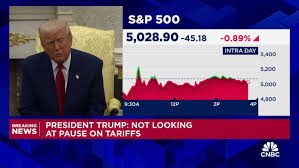
Understanding news tariffs isn’t just about today’s headlines — it’s about seeing how history repeats itself. From trade wars that reshaped global alliances to protective tariffs that saved or destroyed industries, every major event offers valuable lessons about how these economic tools work in practice.
Let’s explore some of the most significant tariff stories in modern and historical contexts.
1. The U.S.–China Trade War (2018–2020)
Perhaps the most talked-about news tariff story of the 21st century, the U.S.–China trade war started in 2018 when the United States accused China of unfair trade practices — including intellectual property theft and currency manipulation.
To counter this, the U.S. imposed tariffs worth over $360 billion on Chinese imports. China retaliated with tariffs on $110 billion worth of American goods.
Impact Summary:
| Category | Before Tariffs | After Tariffs | Effect |
|---|---|---|---|
| Bilateral Trade Volume | $659 billion (2018) | $560 billion (2020) | ↓ Decrease of ~15% |
| U.S. Inflation | 2.1% | 2.5% | ↑ Prices rose modestly |
| Chinese Exports to U.S. | $539 billion | $451 billion | ↓ Decline due to tariffs |
| American Farmers’ Exports | $16 billion (soybeans) | $9 billion | ↓ Heavy loss due to retaliation |
Lesson Learned:
Tariffs can be an effective bargaining tool in international diplomacy, but they also cause collateral damage — especially to small businesses and consumers.
Quote:
“Trade wars are good, and easy to win.” — Former U.S. President Donald Trump
(A statement that would later prove far more complex than it sounded.)
2. The Smoot–Hawley Tariff Act (1930)
The Smoot–Hawley Tariff Act is one of history’s most infamous examples of how tariffs can worsen economic crises.
Passed during the early years of the Great Depression, the act raised U.S. tariffs on over 20,000 imported goods — from agricultural products to manufactured items.
What Happened:
- Countries retaliated by raising their own tariffs, effectively starting a global trade collapse.
- U.S. exports dropped by 61% between 1929 and 1933.
- Global trade fell by two-thirds.
- Economists agree it intensified the Great Depression.
Key Takeaway:
Protectionism can backfire during economic downturns. Instead of saving domestic industries, it can isolate economies and accelerate global collapse.
3. The European Union and Brexit Tariffs (2016–2021)
When the United Kingdom voted to leave the European Union, one of the biggest concerns was tariff reintroduction.
The EU operates as a customs union, meaning member states trade tariff-free within the bloc but apply a common external tariff to countries outside it.
After Brexit, Britain had to:
- Negotiate new trade deals globally.
- Face potential tariffs on EU exports (like cars and food).
- Manage customs checks that delayed shipments and raised costs.
Economic Effects:
| Metric | 2019 (Before Brexit Tariffs) | 2021 (After Exit) | Impact |
|---|---|---|---|
| UK Exports to EU | £300 billion | £250 billion | ↓ 17% decline |
| Food Prices | Index 100 | Index 113 | ↑ 13% increase |
| Trade Processing Time | 2 days | 5–7 days | ↑ Delays due to customs |
Lesson:
Tariff barriers can slow down even the most developed economies. The Brexit case showed that reintroducing trade friction after years of integration can significantly hurt businesses and consumers alike.
4. The U.S.–Japan Trade Dispute (1980s)
In the 1980s, Japan’s booming car exports to the U.S. sparked fears that American automakers were being pushed out of their own market.
The U.S. government pressured Japan to voluntarily limit its car exports and later imposed tariffs on specific goods to protect domestic industries.
Outcome:
- Japanese carmakers responded by building factories in the U.S., avoiding tariffs.
- U.S. consumers continued buying Japanese brands, now made locally.
- The move indirectly created thousands of American jobs.
Lesson:
Tariffs can drive localization of foreign industries — a strategic advantage if managed well.
5. Recent Tariff News: 2024–2025 Updates
Modern news tariffs often reflect a shift in strategic and environmental priorities rather than simple trade disputes. Some recent examples include:
a. Carbon Border Adjustment Mechanisms (CBAM) – EU (2024)
- The European Union launched tariffs on imports based on carbon emissions.
- Aimed at discouraging imports from high-polluting countries.
- Sectors affected: steel, cement, aluminum, fertilizers, and electricity.
b. U.S. Tariffs on Chinese EVs and Batteries (2025)
- New tariffs placed on electric vehicles and lithium batteries to protect domestic clean energy industries.
- Signals a shift toward “green protectionism” — safeguarding climate-related sectors.
c. India’s Tech Tariffs (2024)
- India increased tariffs on semiconductors and electronic components to promote its “Make in India” initiative.
- Encouraged domestic production but led to higher prices for smartphones and laptops.
6. Patterns and Lessons from History
When examining all major tariff news events, clear patterns emerge:
| Pattern | Description | Lesson |
|---|---|---|
| Retaliation Cycle | One tariff leads to another, escalating tensions. | Avoid zero-sum trade wars. |
| Short-Term Gains, Long-Term Pain | Tariffs can protect industries temporarily but hurt consumers long-term. | Balance protection with innovation. |
| Supply Chain Shifts | Companies adapt by relocating operations. | Tariffs can indirectly create new economic hubs. |
| Political Leverage | Tariffs often serve diplomatic goals more than economic ones. | Economic tools double as political weapons. |
In short: Tariffs can stabilize or destabilize economies — depending on how wisely they’re used.
They’re neither good nor bad by nature — it’s the timing, target, and execution that matter most.
Conclusion: The Global Ripple of News Tariffs
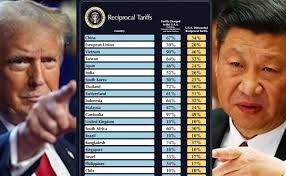
The world of news tariffs is far more complex than simple taxes on trade — it’s a story of power, politics, and policy that touches every part of our lives. From the U.S.–China trade war to carbon border taxes and Brexit, tariffs have proven to be one of the most influential tools in shaping both national economies and global relationships.
At their core, tariffs reflect a balancing act — between protecting local industries and maintaining global cooperation. When used strategically, they can foster growth, encourage innovation, and strengthen domestic resilience. But when applied aggressively or politically, they can just as easily fuel inflation, disrupt markets, and ignite trade wars.
Key Takeaways
- Tariffs are not inherently bad or good — their impact depends on timing, target, and purpose.
- Consumers often pay the price, even when tariffs aim to punish foreign competitors.
- Businesses adapt through supply chain shifts, reshoring, or product innovation.
- Governments use tariffs not just for revenue, but as leverage in global negotiations.
- Global cooperation remains vital — excessive protectionism risks repeating historical mistakes like the Smoot–Hawley Act.
The Future of Tariffs
As global priorities shift toward sustainability, digitalization, and national security, we’re entering an era of “smart tariffs” — designed not only to protect economies but to promote ethical trade, environmental responsibility, and technological independence.
Future news tariffs may focus more on:
- Carbon emissions (green tariffs)
- Digital trade and AI regulation
- Data sovereignty and cybersecurity
- Supply chain resilience in critical sectors
In this evolving landscape, understanding tariffs isn’t just for policymakers or economists — it’s essential for investors, business owners, and everyday citizens who want to navigate the world’s shifting economic tides.
Final Thought:
“Tariffs are the pulse of globalization — each beat revealing who holds power, who adapts fastest, and who pays the ultimate price.”



